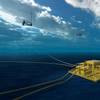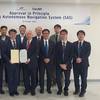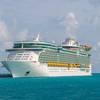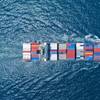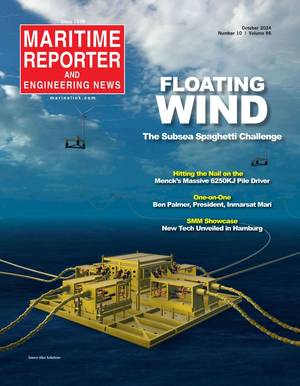Keppel FELS, a member of the Keppel Group, has successfully established a foothold in Azerbaijan through its joint venture yard, Caspian Shipyard Company.
The world leader in the construction of jack-up rigs celebrates the first operating birthday of its rig built in the Caspian Sea. Keppel FELS retraces its trailblazing record as the first Singaporean company to build jack-up rigs there.
“This is not business as usual, but it’s our business. We conduct it with a ‘can do’ attitude…. When there is an opportunity, we grab the ball and run with it,” said Choo Chiau Beng, Executive Director of Keppel Corporation and Chairman and Managing Director of Keppel FELS Energy & Infrastructure
“Caspian Shipyard Company has established an industry capability that will have long term benefits to the country and the Caspian Region… It is the industry expectation that Caspian Shipyard will continue on to become a strong regional player,” said Valeh Aleskerov, Head of Foreign Investments of the State Oil Company, Azerbaijan.
Early Bird
When the USSR broke up in 1991 international energy firms immediately arrived on the newly independent republics to buy up rights to drill for oil and gas. While there were no shortage of creative deals made, top quality offshore drilling rigs were in want. Keppel FELS moved in very quickly by mid 1990s to fill this need.
“We have been casting around to further expand globally in areas where offshore work is likely to be the most active,” said Tong Chong Heong, managing director of Keppel FELS Limited, the offshore arm of the Keppel Group which has yards also in USA, Mexico, Brazil and Norway.
Ready and Able
When Keppel FELS was approached in late 1997 to build their KFELS MOD V class of jack up rig for Transocean SedcoForex in Baku, they were ready. The contract was sealed in June 1998.
Doubtless the owners were apprehensive. Said Bill Thomson, the owner’s representative for the new rig, “When we entered the contract with Keppel FELS, they did not have a functioning yard in Baku. Not only would they be building a rig, but they would also be building a yard as well.”
These Keppel FELS did, in just two years. Not only did Keppel FELS establish an international quality shipyard (Caspian Shipyard Company) from a greenfield, it has also won international acclaim for building the first Western-specification jack-up, Trident 20 in Baku.
Since Keppel FELS’ Baku shipyard, Caspian Shipyard, was just getting started, the decision was made to build the technically difficult pieces in Singapore where the company co-ordinates all of its design work.
Examples of the pieces being built in Singapore were the jack-up legs and jack cases which require extreme precision works that allow little tolerance.
These parts would then be shipped to Baku and assembled with the rest of the parts including the hull structure at Caspian Shipyard.
From Singapore to Baku
Building the pieces in two locations 7,300 miles apart was just a part of the difficulties.
Shipping thousands of tons of high precision pre-fabricated sections to a landlocked lake poses yet another major challenge for Keppel FELS, which undertook the total solution of building and transporting the parts for the owner.
The transhipments, handled by Blue Water Shipping, saw the parts being loaded and unloaded several times from barges to heavylift vessels then back to barges again.
The cargoes started their long and arduous journey in three shipments from Keppel FELS Pioneer Yard in Singapore.
They crossed the Bay of Bengal, passed through the Suez Canal and traversed the Mediterranean and Marmazra seas, past Istanbul, through the Bosphorus Straits, into the Sea of Azov in the north-east corner of the Black Sea and into Mariupol in the Ukraine.
After covering a total of 6,377 miles, there were another 980 more miles to go.
From Mariupol, they headed north-east through the canal system and inched literally through 19 narrow locks, and under overhead power cables that had to be lifted up with poles.
Winter was approaching. Any delay at this stage would mean that the structures would arrive six months late for the canal system freezes up for five months of the year. Down to the last detail planning was necessary.
Early Delivery
By August 2000, Keppel FELS proudly delivered Gurtulush then known as Trident 20 to its owners in the Baku yard, ahead of schedule.
“This is not business as usual, but it’s our business. We conduct it with a ‘can do’ attitude,” explained Choo Chiau Beng, chairman and managing director of Keppel FELS Energy & Infrastructure, which will complete by early next week its privatisation exercise under Keppel Corporation. Choo is also the Executive Director of Keppel Corporation.
Replicating a Success
Hot on the heel of the success of the first multi-million dollar rig, another drilling contractor, Maersk, signed a US$167 million contract in early 2001 to build a semi-submersible based on the same formula of a joint construction arrangement between Keppel FELS Singapore and its subsidiary in Baku.
Keppel FELS has been restructured with Keppel’s marine arm, Keppel Hitachi Zosen. Together, the two companies will have a combined business and operational network of 12 shipyards in strategic offshore markets and hubs and major sea routes around the world.
“It was clear from the beginning that the construction of the unit was extremely challenging for Keppel FELS and especially for Caspian Shipyard Company … Keppel FELS demonstrated a strong commitment… and proved to be extremely vigilant…
“The quality of the work performed should be highlighted. The result of an independent structural audit revealed the excellence of the work done,” said Jean-Pierre Dolla, general manager of TotalFinaElf E&P Azerbaijan BV, the leader of the Drilling Contract for Gurtulush and its first user, congratulating Keppel FELS and CSC on the first operating birthday of this heavy duty and modern class jack-up in Azerbaijan.
A long term rig builder, Keppel FELS is committed to remain in Azerbaijan. It employed up to 1,000 people at the height of the construction of Gurtulush.
“An example of how successful they have been can be seen by the quality of the work, which is on par with what Keppel FELS could have produced in Singapore,” Thomson said.
Featured videos
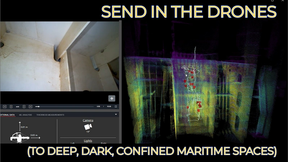
Send in the Drones (to deep, dark, confined maritime spaces)

Taking the First Step Toward Autonomy
Subscribe for
Maritime Reporter E-News
Maritime Reporter E-News is the maritime industry's largest circulation and most authoritative ENews Service, delivered to your Email five times per week



